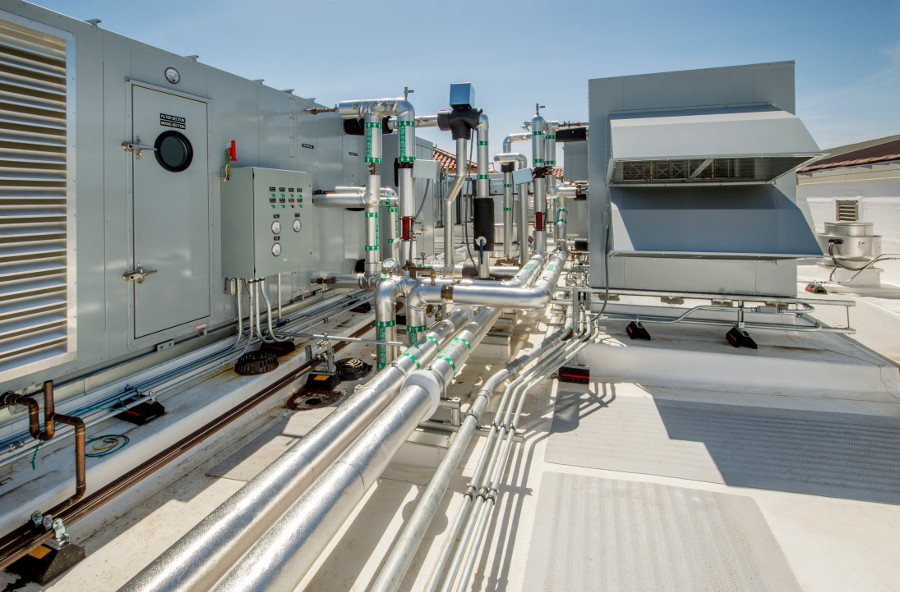After 2015’s Legionella outbreak, NYC mandated several regulations for cooling towers, including requirements from the DOB, DOHMH, and New York State Department of Health.
DOHMH inspectors are issuing numerous infractions for various aspects of the maintenance program and plan across the city, so we’ve rounded up all our cooling tower resources to arm you with the latest information on staying compliant:
- Cooling Towers – What You Need to Know: A comprehensive post including text from all four pieces of Legionella/cooling tower regulations (including Chapter 8)
- Cooling Towers seminar from RealFocus 2016 – Scott Lenzi of OCS Chemical breaks down the requirements and lists best practices for avoiding violations
- RealFocus 2016 – Cooling Tower slides
- Chapter 8 DOHMH Requirements and Infractions – the full text of the DOHMH list of requirements for the maintenance program and plan (MPP), and a list of associated infractions
Important Updates and Things to Know
How Many Inspectors are There?
- There are currently ~70 inspectors reviewing cooling tower documentation and testing, and several more are expected to be hired for the summer.
Follow Required Dates Exactly
- Inspectors are following regulations to the letter – if 90-day required tests are performed on day 91, that’s grounds for a violation. If regular 3x a week testing has a 3-day break (Friday, then Tuesday, for example) instead of a 2-day maximum break (Friday, then Monday), that’s also grounds for a violation. Make sure you’re performing all tasks as frequently as the law requires.
Best Practice: Make Sure Your Responsible Person is Onsite
- Inspectors may also not be familiar with cooling tower/water systems, or similar equipment. It’s a best practice to have your responsible person (individual carrying out components of the MPP) onsite during an inspection to answer any questions and guide the inspector to information/documentation as requested. This may prevent violations from being issued during the inspection process.
2 Key Documents
- There are two key documents that come before ECB-related Summonses are issued: an Inspection Summary Report (ISR) and a Violation Deficiency Report (VDR). An ISR is issued either immediately following the inspection via e-mail (to the registered owner of the tower), or 2 weeks afterwards. The ISR lists codes of law, the specifics behind it, and whether or not the building was preliminarily compliant. This will give owners and managers an idea of which items they will have to correct before Summonses are issued. Each rule will be listed along with a status of “Compliant” or “Violation.”
The VDR Process
- The VDR is sent out ~30 days after the inspection and provides more detail on infractions. The VDR will note what specifically garnered the violation (for example, lack of risk assessment elements in MPP), and whether or not there is a cure period (usually 0, 3, or 7 days). If information is provided to the DOHMH via the online cooling tower portal within the cure period, you may be able to avoid a violation for that specific infraction. Otherwise, you may receive ECB Summonses for individual infractions 2-4 weeks after the VDR.
What Happens When a Summons is Issued?
- Cooling Tower-related Summonses have hearing dates scheduled further into the summer (July and August, currently), and also offer a $500 mail-in penalty for many infractions. Should you choose to pay the mail-in penalty, you will not have to attend the hearing. That said, you will still be required to update your missing information/testing data to avoid future violations. You may also be required to attend the hearing and bypass the mail-in penalty, depending on the severity of the infraction.
New York State Requirements
- This is all separate from the violation process for New York State requirements, which may be tacked onto existing NYC violations. As a reminder, all cooling towers must be registered with both the State and the City, and registration portals and processes are separate for each entity.
We’ll continue to provide updates as the city and the state refine their inspection processes.


